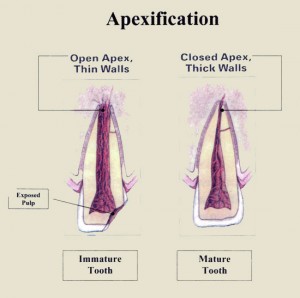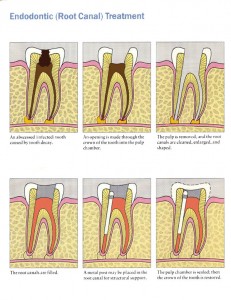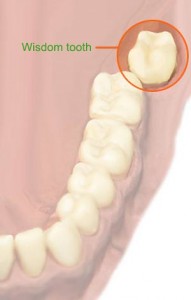The first visit to the dentist, the dentist will gives you local anaesthesia and remove all the pulp tissue. He will then put a temporary filling material to fill up the empty spaces. This process is called Access Opening. During the second visit, the temporary filling material is removed and root canal material like gutta percha is placed. A temporary filling material is placed again. This process is called Obturation. During your last visit, the temoporary filling material is removed and replaced by permanent filling material like composite/amalgam and a crown preparation is done.
Early Childhood Caries (ECC)
What is it?
Early Childhood Caries (ECC) is a chronic and infectious oral disease of young children, most commonly seen in poor and minority populations.
The American Dental Association (ADA) defines ECC as “the presence of one or more decayed (non-cavitated or cavitated lesions), missing (due to caries) or filled tooth surfaces in any primary tooth in a preschool-age child between birth and 71 months of ageâ€. Continue reading
Apexification
Definition:
Apexification is a method to induce development of the root apex of an immature, pulp less tooth by formation of osteocementum or other bone-like tissue. It differs from apexogenesis, the physiologic process of root development.
Cherubism Part 2
Anatomy
Cherubism is displayed with genetic conformation and when excessive osteoclasts are found in the affected areas of the mandible and Maxilla. Large cysts will be present with excessive fibrous areas inside the bone. The fibers and cysts will be found among the trabecula of the Coronoid process, the ramus of mandible, the body of mandible and the maxilla regions. The maxilla will be affected up to and including the orbits and sometimes inside the lower orbits. The maxilla and zygomatic bones are depressed and eyes appear to gaze upward. The maxilla has been found to be more severely affected in most cases than the mandible bone. Some patients found with lower inner orbital growths and cysts may lose vision. Continue reading
Single Visit Rool Canal Treatment
INTRODUCTION:
Clinical endodontics has changed and expanded over the years due to improvement in cleaning and shaping procedure,culturing, intra canal medicaments and root canal filling materials and techniques
Sterilization and Disinfection Part 2
Intense Dry Heat:
In the past method of sterilizing endodontic files was the use of glass bead or salt sterilizer. These sterilizer often need extensive warm-up times and periodic calibration.
Sterilization and Disinfection Part 1
Definition:
Is defined as freeing the object or substance from all life of any kind
OR
It is defined as the process by which an article, surface or medium is freed of all micro organisms either in the vegetative or spore state Continue reading
Neonatal and natal teeth
What are they?
A baby’s first tooth usually erupts when he is about 6 months of age. Until then, they are toothless. However, in some individuals, teeth may erupt at a much earlier age, such as from birth. Natal teeth are teeth that are present or have already erupted when the baby is born. Neonatal teeth are teeth that erupts within the 1st30 days of life.
Is it normal? Continue reading
Guide to Wisdom Teeth Removal
The emergence of wisdom tooth normally occurs between 18 to 24 years of age. The prevalence for at least one impacted (which the path of eruption of the tooth is blocked by another tooth or bone which therefore prevents it from assuming a normal position in the mouth) lower wisdom tooth is 72.7% in an age of 20 to 30 years. An impacted tooth is not a disease in itself but is considered an abnormal state. Continue reading
Casting Defects
CAN BE CLASSIFIED AS:
 1) Distortion
2) Surface roughness and irregularities
3) Porosity
4) Incomplete or missing detail





